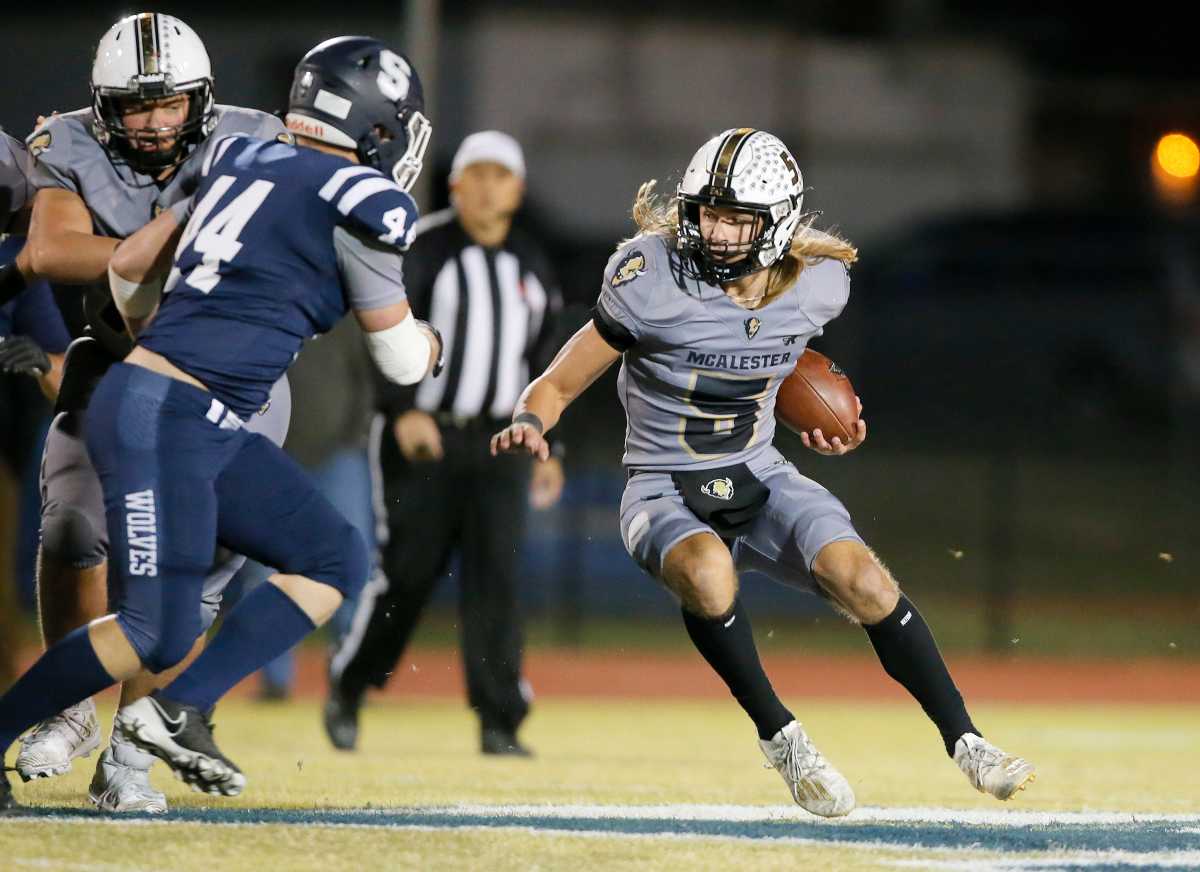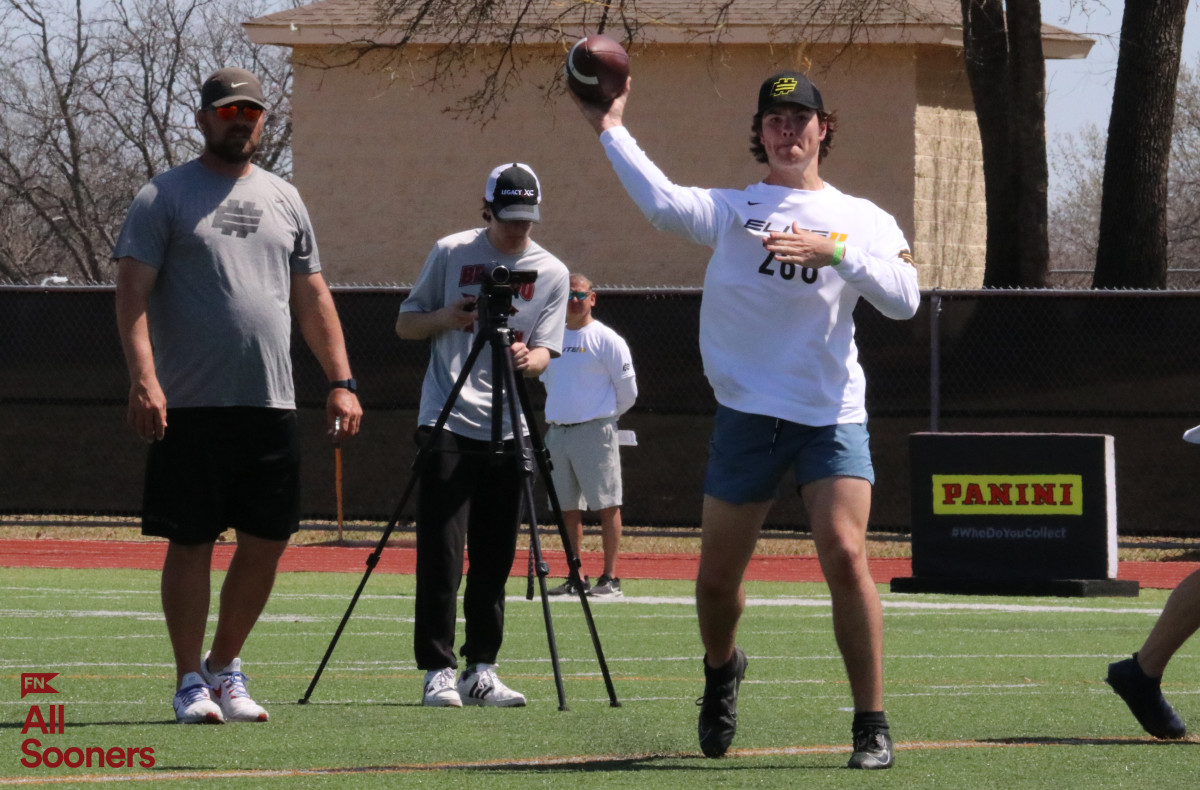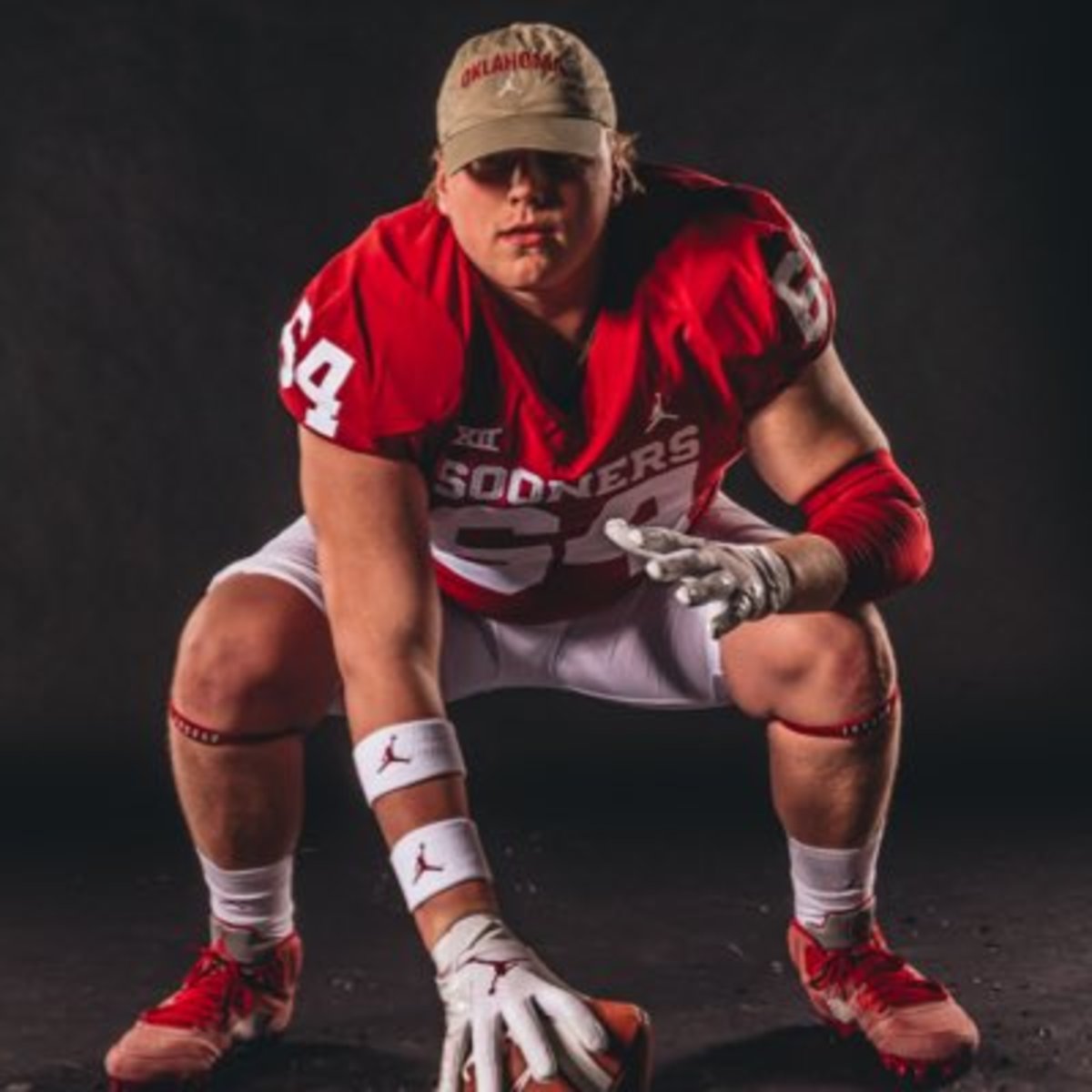There are Several Reasons Why Oklahoma Doesn't Have a Lot of Verbal Commitments

Heading into Saturday’s Spring Game — one of the pivot points on Oklahoma’s annual recruiting calendar — there has been some consternation among Sooner fans about OU not having locked up a lot of verbal commitments.
First, those will happen, coach Brent Venables says. In fact, he made it sound on Tuesday like there are some almost scheduled for the near future.
Second, the nature of when schools land verbal commits has changed — some might say drastically — for a handful of reasons.
OU currently has four verbal commitments in the 2023 class. From 2016-2021, the Sooners had anywhere from 8 to 11 prospects committed by April 20. That changed last year, when only seven had pledged by this time in the 2022 class.
Oklahoma's 2023 Verbal Commitments
- WR Ashton Cozart, Flower Mound, TX (Feb. 4)
- RB Erik McCarty, McAlester, OK (Jan. 29)
- QB Jackson Arnold, Denton, TX (Jan. 24)
- OL Joshua Bates, Durango, CO (Aug. 13)
But a low number of commits for next year’s class needn’t be a source of panic for those who follow Oklahoma recruiting. It’s just the way business is conducted now. Even of the seven commitments OU had from the 2022 class just 52 weeks ago, only two of those, due almost entirely to the coaching change, ended up signing with the Sooners.
Among similar programs — recent multi-conference champions and/or regular playoff contenders — only Ohio State and Notre Dame (with nine each) have more than eight players committed to the 2023 class. Georgia has eight. LSU has four, Alabama and Clemson have three, and Oregon has two.
Although Oklahoma previously had a handful of 2023 commits, most of them pledged to Lincoln Riley at USC. In OU's current class of four, the last one happened on Feb. 4. The Sooners are going on almost three months without a new commit.

RB Erik McCarty
Not a big deal, Venables says. One big reason is a recent rule change.
When the NCAA in 2019 amended the official visits calendar to Aug. 1 of the athlete’s junior year, it relaxed the urgency on the part of both schools and prospective student athletes to squeeze in late visits and eased the pressure of making (or pursuing) verbal commitments.

WR Ashton Cozart
“Because you can do official visits earlier, so many of the kids are putting off their decision,” Venables said. “They're not waiting until December. They're waiting until maybe just prior to their senior year, and they're disciplined and committed to waiting for that.

QB Jackson Arnold
“For us, we want to be patient in the process. The last thing we want is to have guys committing and decommitting, having buyer's remorse. We want to be sure as well, and I think a lot of programs are probably the same.”

OL Joshua Bates
There’s also a lingering effect from the 2020-21 pandemic shutdown. Coaching staffs are a little behind where they normally would be in evaluating the 2023 class. Maybe they’re not quite sold on a kid like they would be if they’d gotten to see him more during the previous two years, so offers are a bit slower to go out.
On the flip side, prospects and their families might not have a full inventory yet of unofficial campus visits to the colleges they like, or the visits from college coaches at their high schools.
Every little piece plays a part, Venables said, and patience will be rewarded soon.
“Again, I think the biggest thing I think is the change in the calendar from a recruiting and official visit standpoint,” Venables said. “You can take visits here this spring and the early parts of this summer, the first few weeks into June — that's what you're going to see.
“You're going to see an influx by that third week of June. Man, you're going to see commitments left and right. Then there'll be another small window in late July because it opens back up briefly before the dead period goes again in August. That's what I think is the No. 1 reason behind it all.”
Last year, Ohio State got four commitments in June and July. Clemson got three in June. Alabama got six in July, while LSU got five.
In all, it’s tough to track who got what in the given sample, because OU, LSU, Notre Dame and Oregon all had coaching changes in December, leading to a massive run of decommitments.
One factor that shouldn’t be overlooked: the transfer portal.
In the past, if a coaching staff was caught off guard by a run of defections or injuries at a certain position, they had to try to build back those numbers with extra bodies from future recruiting classes.
Now, thanks to the portal, coaches can fill vacancies with an immediate influx of talent — often, experienced talent. Pushing a 16-year-old to give you his verbal commitment for two years down the road isn’t as pressing as it used to be, because now you can fill those gaps with a 21-year-old who’s already played college football for two or three years.
“That’s a great point,” Venables said. “The portal, people are not in as big of a hurry to push for the commitments because there’s a safety valve, maybe a better solution to the needs on their roster. That’s not the only way, but I do think some people are committed to being a little bit more patient because of that.”
